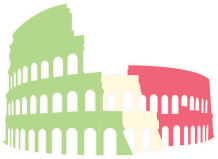‘Baccio Bandinelli – Scultore e maestro (1493 – 1560)’
Museo Nazionale del Bargello – Florence
9th April – 13th July 2014
Beginning on the 9th April, this exhibition in Florence’s famous Museo Nazionale del Bargello presents the work of Baccio Bandinelli, described by Giorgio Vasari in the biography he wrote for the sculptor as an “artist of eternal renown”, but destined to centuries of obscurity and dismissal by critics.
The exhibition aims to finally give Bandinelli the recognition he deserves: even Vasari, with whom he had a long-running feud, was forced to admit his rival’s greatness, and the sharpness of his mind, in the long and tormented profile he wrote on him. This admiration and success was also reflected in the writer Francesco Bocchi’s 1591 work on the beauty of the city of Florence, and continued until it reached its peak during the Neoclassical period, only to immediately begin a steady decline.
This plunge in his popularity followed a time when he was considered, alongside Michelangelo, to be the greatest sculptor of his generation, and the most important figure in 16th century Florentine sculpture. Among his commissioners were two popes and Duke Cosimo of the Medici, whose endorsement bestowed upon him undisputable prestige in Florence and elsewhere.
The exhibition will contain all of his sculptures and paintings that can be safely transported, his prints, sketches, medallions and a rare waxwork piece from Montpellier. Among the works on show will be his Bacchus from Pitti Palace, his marble reliefs from the Duomo, several marble busts, his painting of Leda and the swan on loan from Paris, and the portrait of the artist himself, from the collection of the Isabella Stewart Gardner Museum in Boston.
The works that for obvious reasons cannot be put on show as part of the exhibition, such as his great public and sacred monuments, will be contained and commented upon within the catalogue, and presented as part of a video created for the occasion.
The catalogue will contain written pieces by a range of different Italian and international specialists, all paying tribute to a master who for too long was confined to an obscure corner of history, but whose influence and legacy were key in inspiring so many artists who came after him.

